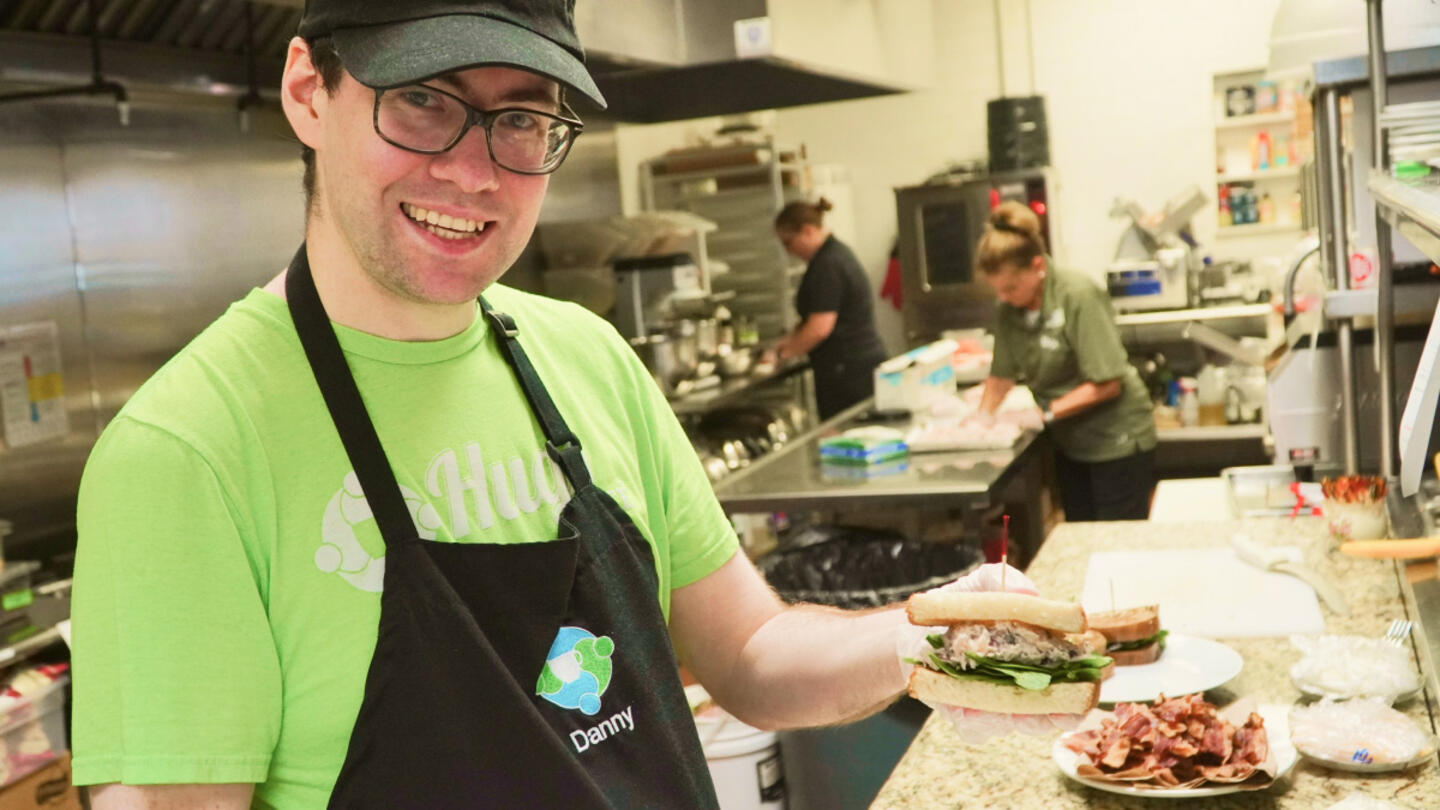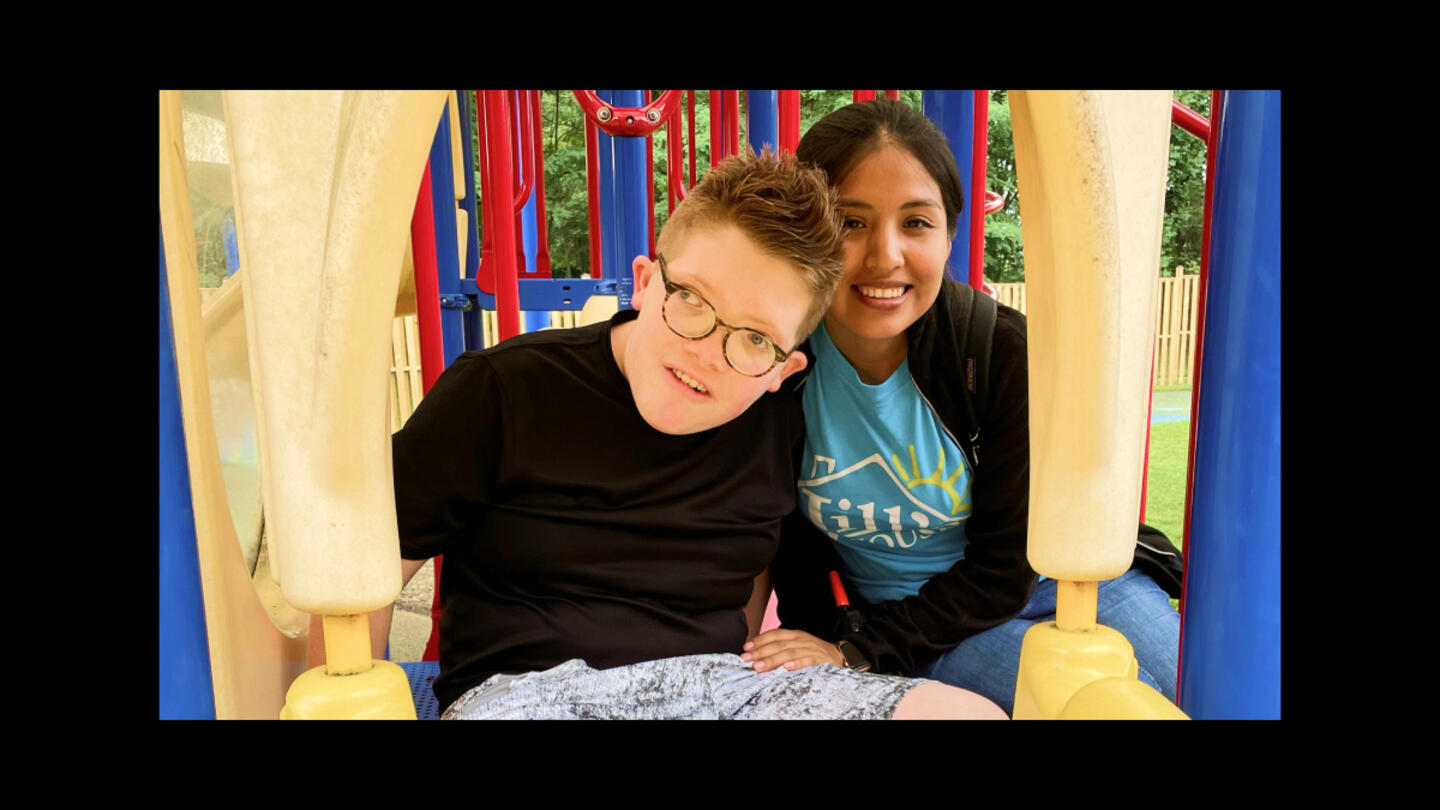When the local Salvation Army in the Cedar Crest neighborhood of Dallas, Texas, lost funding and shut down, the community lost more than an activity center.
“What was lost was access,” said Darrion Lewis, CEO of Behind Every Door. “Youth sports, especially football, was a way to keep kids busy and keep them off the streets. For single moms in the community to connect their sons and daughters with father figures and give them some structure that they were struggling to provide. All of that was connected to the Salvation Army.” Prior to closing, the Salvation Army had been running a youth sports program.
At the time, Behind Every Door was running out of a cozy three-bedroom apartment. Toni Johnson, a local resident and strong advocate for community improvements, approached Behind Every Door with ideas to expand its center to meet the needs of the community on an even bigger scale than the Salvation Army had done. She came with a deep understanding of exactly what local people wanted.
“She was very instrumental in helping us understand what the needs were, the research that she had already started,” Lewis said. “As a direct community advocate, she was very clear on what the needs were that we didn’t know about.”
Johnson’s community-driven technique changed everything. Behind Every Door worked with Johnson and Dominique Alexander, a local city bond board member, to secure funding for a new center to fill the gaps left behind by the Salvation Army.
This past April, Behind Every Door opened Cedar Crest Community Center, an updated $15 million community center in South Dallas. In just six months, the center has reached over 4,000 community members.
More significant than the number served, however, are the ways it has brought community members together and improved access to financial, educational, and health resources. Facilities like a bank, a mental health center, and workout classes, among others, help community members meet essential needs and support their overall well-being.
How did this nonprofit achieve such dramatic success?
Following Johnson’s example, Lewis and his team took the time to immerse themselves in the local community and understand its members’ concerns.
Though there are many community centers across the country, Lewis explained, “What makes Behind Every Door unique is our commitment to community integration.”
To achieve this, the organization is using Customer First Measurement, an approach in which nonprofits treat the people they serve as customers by measuring success through individual satisfaction and transformation. Lewis said this approach has always been foundational to Behind Every Door’s work, but he only recently learned that there is a specific methodology to it.
“Typically, it’s the opposite,” Lewis said. “Somebody’s coming in from an outside community to serve. Here, everybody’s serving together. They become friends, and they interact with one another. And that is such a game changer.”
Solutions to poverty are often designed from a top-down approach that makes assumptions about what people in the community want and need without consulting them — such as opening a food bank without considering how accessible it is to community members who don’t have transportation. Many of these top-down organizations overlook the actual living conditions and needs of the people they aim to serve, often missing whether their efforts are truly making a difference.
In contrast, Behind Every Door’s Cedar Crest Community Center demonstrates a more effective approach to creating impact: beginning with the community members and listening to their unique needs, planting the seeds for neighborhood transformation.
Individuals design their own solutions
There’s one key ingredient that Behind Every Door starts with — proximity. Although simple, proximity demonstrates the importance of listening to a client’s individual needs.
Behind Every Door made sure the center would be convenient — within walking distance — for the community members it serves. Lewis described this as an example of customer-informed solutions at work: positioning the individuals, rather than the program itself, as the central focus and indicator of success.
“People choose their bank based on convenience,” he said. “To that end, we go into underserved neighborhoods and realize that convenience tends to be either really scarce or just not any good at all. Going into the Cedar Crest community, we realized that there was no direct access to banking within walking distance. [For] primary health care, people don’t have a relationship with their doctors because they’re not within walking distance. Transportation is an issue. There are no grocery stores within a two- to three-mile radius. No access to mental health and wellness services.”
To learn these insights, Behind Every Door engaged directly and repeatedly with the local community. It hosted town halls to listen and learn directly from community members. Lewis and his team then went through the community, knocking on doors — literally.
Sign up for the Strong & Safe Communities newsletter for stories, ideas, and advice from changemakers working with their neighbors to address the biggest problems we face.
“Because our work started inside an apartment community, knocking on doors has been the key source of our information,” Lewis said. “Going door to door, hearing people, discovering what their needs were, surveying them.”
Although many organizations use canvassing as a technique, Behind Every Door’s approach enlisted neighbors to reach out to neighbors on a personal, intentional level.
“What made it different is that we were actually neighbors knocking on your door,” he continued. “We were actually there every day. Letting people know that we are here is just how we’ve done it and how we continue to do it.”
Behind Every Door used those insights to ensure that its Cedar Crest Community Center met the actual needs of the community — not just what it assumed those needs would be. This included a fully functional bank, a primary health care center, a pharmacy, mental health and wellness programming, and recreational activities. Recognizing these gaps, Behind Every Door leveraged relationships with local businesses and invited them to collaborate.
Besides focusing on understanding customer needs to drive program design, the nonprofit also used Customer First Measurement to elevate its community by redefining how “success” was measured. Rather than monitoring outputs like the number of activities conducted, Behind Every Door measures results via community members’ direct feedback on how their lives have improved through its programs, including surveying participants post-program.
Behind Every Door ensures individuals’ basic needs are met, empowering them to pursue new careers, attend school, or strengthen community relationships. Once they are equipped to grow into the best versions of themselves, these individuals can support others on the same path, further strengthening connections throughout the community.
Behind Every Door describes this as “open[ing] doors for kids and adults to discover their gifts and purpose, to nurture those and then to overcome the barriers to walking in the fullness of who God made them to be.”
What community-led transformation looks like
In just six months of operation in the Cedar Crest neighborhood, Behind Every Door has revitalized the local community by bringing opportunities and resources directly to families and individuals. In addition to educational programs and health resources, the Cedar Crest Community Center now offers financial literacy programs, STEM learning, and other educational resources that position it to become a central hub for the community.
According to Lewis, the center received over 600 applicants for its first youth program in just two weeks — so many that the program had to cap applications. Its 10-week summer programming saw over 3,000 local community members participate. In the few months since the summer, that number is closer to 4,500.
But the most important customers, Lewis said, are the families and communities of those who take part in Behind Every Door’s programs.
“The greatest impact has been on the parent,” he said. “Parents are telling us, ‘My husband and I were able to keep our jobs because of the duration of the summer camp — because of the fact that it was actually free.’”
By starting with the community members themselves, Behind Every Door is ensuring that its model can keep growing and changing alongside its clients.
“People feel like a part of it,” he said. “They actually want to figure out ways to go deeper and figure out how to be a part of the solution more than relying on you to just do everything. From a sustainability perspective, it blesses you, and it takes you to a whole other level. When you have the support of the people, you can go further than when you feel like you have all the answers.”
“We learn what the needs are,” Lewis said. “The goal with all of it is to generate hope.”
Behind Every Door is supported by Stand Together Foundation, which partners with the nation’s most transformative nonprofits to break the cycle of poverty.
Learn more about Stand Together’s efforts to build strong and safe communities and explore ways you can partner with us.

People with disabilities want meaningful work — and Hugs Cafe is making it happen.

At this ‘resort,’ children with intellectual disabilities are seen as gifts to be celebrated and loved.

Veterans experience loss when leaving service. Could this be key to understanding their mental health?

The Grammy-nominated artist is highlighting the stories we don’t get to hear every day.
